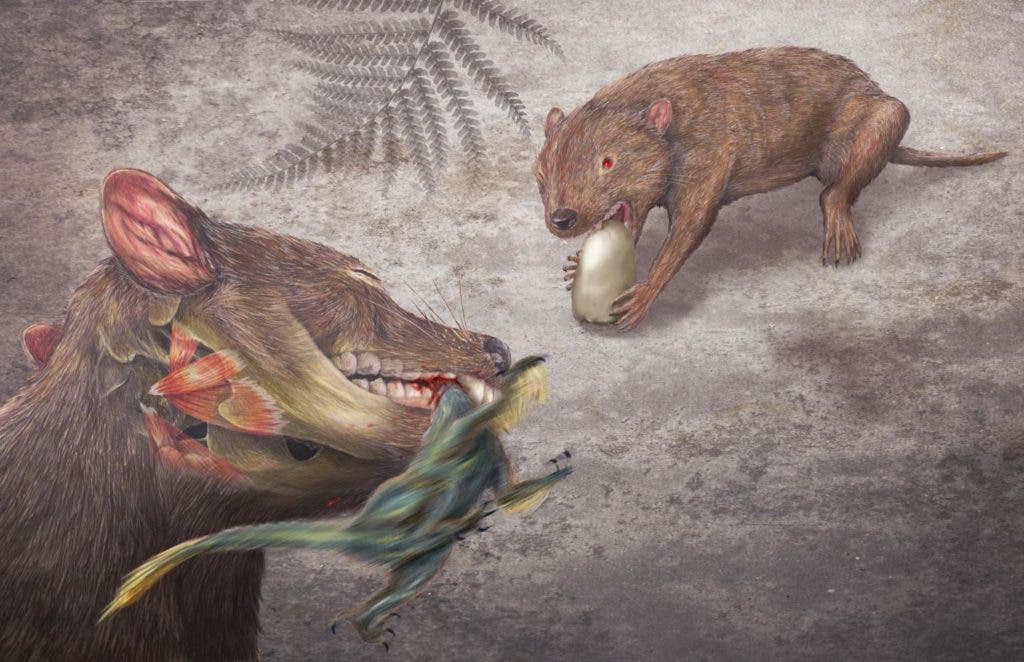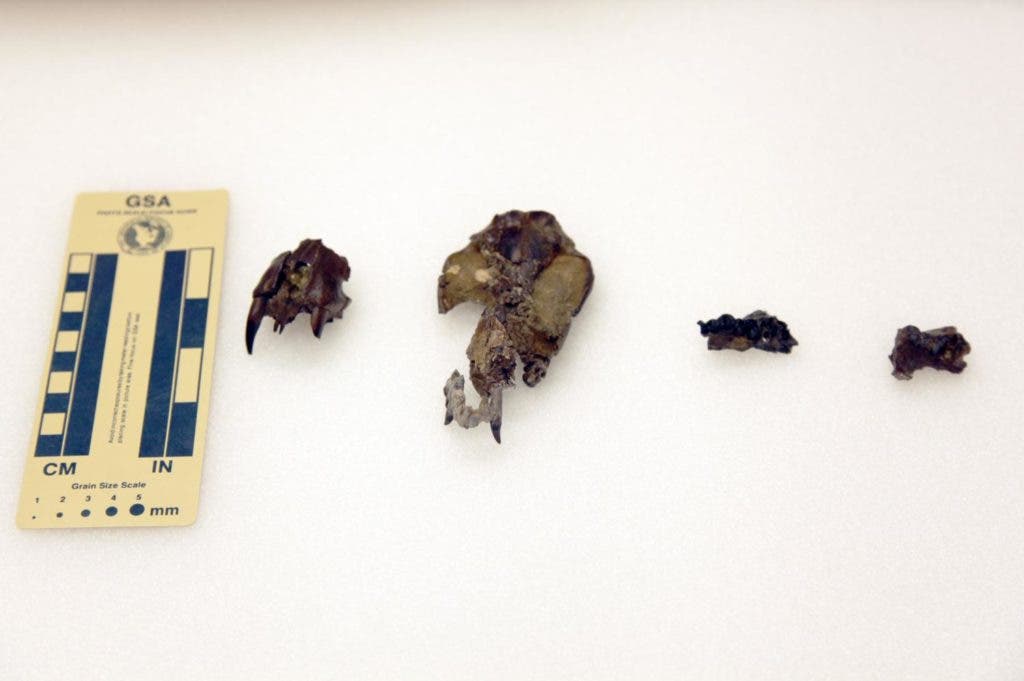
A newly described metatherian species, which are the closest relatives to marsupials, overturns the age-long paradigm that mammals in the age of dinosaurs were cowering rodent-sized critters. The badger-sized creature lived in the late Mesozoic 66 to 69 million years ago and had the strongest biting force of any mammal, alive or extinct. Its diet was varied and likely hunted small dinosaurs.
Didelphodon vorax was the honey badger of the Mesozoic. It lived in what’s today Montana and North Dakota and, given its age, it suggests marsupials appeared about 10 to 20 million years earlier than scientists thought. Previously, everyone presumed marsupials originated in South America but Didelphodon v. indicates marsupials first called home North American and from there on dispersed to other continents.
Multiple fragments and bones were found in the Hell Creek Formation, a division of rocks in North America dating to the end of the Cretaceous Period some 65.5 million years ago. Four individuals were found here, including fossils of an almost complete skull, a partial snout, and two upper jawbones.
“What I love about Didelphodon vorax is that it crushes the classic mold of Mesozoic mammals,” Dr. Gregory P. Wilson, Burke Museum Adjunct Curator of Vertebrate Paleontology and University of Washington Associate Professor of Biology, said. “Instead of a shrew-like mammal meekly scurrying into the shadows of dinosaurs, this badger-sized mammal would’ve been a fearsome predator on the Late Cretaceous landscape—even for some dinosaurs.”

Together, these fossils helped assemble the marsupial ancestor’s skull and reconstruct its bite. It’s estimated the animal used to weigh 5.3-11.5 pounds and packed quite the bite, according to a team of researchers from the Burke Museum and the University of Washington.
The researchers performed CT scans which were used to build a model of the ancient mammal’s biting force. After comparing the results with other known animals, scientists estimate Didelphodon v. had the strongest bite force of any mammal that has ever lived. That’s pound-for-pound because Didelphodon v. was, after all, no bigger than today’s Virginia opossum.
Besides a strong bite, the marsupial ancestor had specialized canines similar to living felines and hyenas, as reported in Nature Communications. This suggests Didelphodon was able to bite deep into prey, all the way to the bone which its shearing molars and big rounded premolars could crush.
“I expected Didelphodon to have a fairly powerful bite based on the robust skull and teeth, but even I was surprised when we performed the calculations and found that, when adjusted for body size, it was capable of a stronger pound-for-pound bite than a hyena,” said Abby Vander Linden, a UW Biology research technician. “That’s a seriously tough mammal.”
It’s not clear right now whether Didelphodon was a hunter, scavenger or did both. Judging from “microwear” patterns engraved on the teeth, we at least know Didelphodon was an omnivore whose diet included a range of vertebrates, plants, and hard-shelled invertebrates like mollusks and crayfish. It also likely gobbled on insects, spiders, earthworms, and leeches.
Besides being extremely badass, Didelphodon might help us pinpoint marsupial evolution. The newly described Didelphodon fossils indicate five major lineages of marsupial ancestors and marsupials themselves diverged in North America 100-85 million years ago. Just as other early mammals and flowering plants began to diversify, marsupial ancestors got larger and diversified their diet. However, much of this diversity gradually decreased between 77 and 66 million years ago. Marsupial diversity then abruptly declined 66 million years ago, during the mass extinction event that wiped out dinosaurs. In response, marsupial evolution shifted to South America.
“Our study highlights how, despite decades of paleontology research, new fossil discoveries and new ways of analyzing those fossils can still fundamentally impact how we view something as central to us as the evolution of our own clade, mammals,” Dr. Wilson said.


